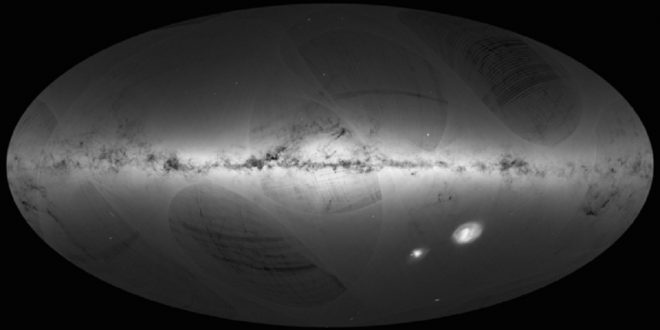The European Space Agency’s Gaia mission has released its first set of data, resulting in the assembly of the most detailed 3D map of the Milky Way ever. The result is a stunning portrayal of our galaxy as never before seen, featuring 20 times as many stars previous galactic surveys have captured.
“Gaia is at the forefront of astrometry, charting the sky at precisions that have never been achieved before,” Alvaro Giménez, an ESA science director, said in a press release. “Today’s release gives us a first impression of the extraordinary data that await us and that will revolutionize our understanding of how stars are distributed and move across our Galaxy.”
Launched nearly three years ago, Gaia began its scientific mission in July 2014. This first release of data is comprised of information gathered during its first 14 months of scanning the sky, up to September 2015.
“The beautiful map we are publishing today shows the density of stars measured by Gaia across the entire sky, and confirms that it collected superb data during its first year of operations,” said Timo Prusti, Gaia project scientist at ESA.
By allowing researchers to gain more precise measurements of stellar ranges, Gaia’s information could help verify just how swiftly the universe has grown since its creation. By investigating stellar trajectories, the satellite could help researchers figure out where certain clusters of stars originated from, and perhaps how forces like dark matter affect their motion today. Astronomers also expect to uncover lots of new items, including planets that signify their presence with a tell-tale “wobble” invisible stars.
Gaia circles the sun, tracking a path that keeps it around a million miles beyond Earth’s own orbit. The craft holds two telescopes, each with a billion-pixel camera. Gaia will watch each of its billion-plus targets around 70 times, allowing researchers to chart shifts in illumination and location for many years.
Agencies/Canadajournal
 Canada Journal – News of the World Articles and videos to bring you the biggest Canadian news stories from across the country every day
Canada Journal – News of the World Articles and videos to bring you the biggest Canadian news stories from across the country every day



